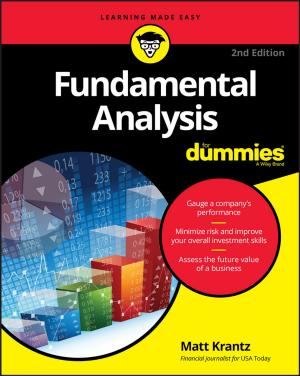Derivatives Clearing and Risk Management
Business & Finance, Finance & Investing, Finance, Investments & Securities| Author: | Zeyu Zheng | ISBN: | 9781386693673 |
| Publisher: | Zeyu Zheng | Publication: | January 14, 2018 |
| Imprint: | Language: | English |
| Author: | Zeyu Zheng |
| ISBN: | 9781386693673 |
| Publisher: | Zeyu Zheng |
| Publication: | January 14, 2018 |
| Imprint: | |
| Language: | English |
The derivatives market is generally viewed by the public as a highly sophisticated and somewhat esoteric area. Associated with various high-profile financial disasters involving rogue dealing and catastrophic investment losses, it also tends to have a less than graceful reputation. Many people, including financial practitioners, were probably first made aware of the derivatives market through the global financial crisis and the ensuing regulatory overhauls.
The truth is that derivatives are fundamental to the well-being of a modern market economy. Time and again, surveys of usage by both non-financial and financial firms underline the fact that derivatives, including futures, options, and swaps, play a prominent role in both financial risk management and world commodity commerce.
Underlying the integrity and credibility of the derivatives market is what has traditionally been considered a plumbing-like infrastructure—the central counterparty, which emerged as an unlikely hero through the crisis. Swiftly identified by policy makers as a panacea for mitigating the financial risk associated with the colossal derivatives market, central counterparty clearing has grabbed enormous attention and gained exponential growth in importance during the past decade.
Originally developed and perfected in the derivatives market, central counterparty clearing aims at guaranteeing the performance of each and every transaction between unknown parties through innovative mechanisms such as margin collection and credit demutualization. While existent for derivatives transactions for over one and a half centuries, central counterparty clearing only became widely adopted by the cash securities markets around the globe in the past twenty years. It therefore represents a major institutional contribution by the derivatives market to the world of financial risk management.
The fields of derivatives clearing and central counterparties are riddled with jargons and acronyms. The purpose of this book is to communicate as much information as possible to everyone who occasionally hears about or needs to be involved with derivatives clearing in the course of their work. It is primarily aimed to bring the concepts of derivatives clearing and its related risk management techniques to a wider audience, including business professionals with a general interest in economics and finance, but could also appeal to subject specialists on financial risk management.
After exploring the history of derivatives clearing in the past and its present roles, the book offers an overview of the special features of a modern derivatives clearinghouse. To provide more in-depth insight, several important current topics are also discussed, such as industry structure models, legal underpinnings of central counterparty clearing, risk management practices, bilateral clearing of over-the-counter swaps, and other related regulatory and governance issues.
The derivatives market is generally viewed by the public as a highly sophisticated and somewhat esoteric area. Associated with various high-profile financial disasters involving rogue dealing and catastrophic investment losses, it also tends to have a less than graceful reputation. Many people, including financial practitioners, were probably first made aware of the derivatives market through the global financial crisis and the ensuing regulatory overhauls.
The truth is that derivatives are fundamental to the well-being of a modern market economy. Time and again, surveys of usage by both non-financial and financial firms underline the fact that derivatives, including futures, options, and swaps, play a prominent role in both financial risk management and world commodity commerce.
Underlying the integrity and credibility of the derivatives market is what has traditionally been considered a plumbing-like infrastructure—the central counterparty, which emerged as an unlikely hero through the crisis. Swiftly identified by policy makers as a panacea for mitigating the financial risk associated with the colossal derivatives market, central counterparty clearing has grabbed enormous attention and gained exponential growth in importance during the past decade.
Originally developed and perfected in the derivatives market, central counterparty clearing aims at guaranteeing the performance of each and every transaction between unknown parties through innovative mechanisms such as margin collection and credit demutualization. While existent for derivatives transactions for over one and a half centuries, central counterparty clearing only became widely adopted by the cash securities markets around the globe in the past twenty years. It therefore represents a major institutional contribution by the derivatives market to the world of financial risk management.
The fields of derivatives clearing and central counterparties are riddled with jargons and acronyms. The purpose of this book is to communicate as much information as possible to everyone who occasionally hears about or needs to be involved with derivatives clearing in the course of their work. It is primarily aimed to bring the concepts of derivatives clearing and its related risk management techniques to a wider audience, including business professionals with a general interest in economics and finance, but could also appeal to subject specialists on financial risk management.
After exploring the history of derivatives clearing in the past and its present roles, the book offers an overview of the special features of a modern derivatives clearinghouse. To provide more in-depth insight, several important current topics are also discussed, such as industry structure models, legal underpinnings of central counterparty clearing, risk management practices, bilateral clearing of over-the-counter swaps, and other related regulatory and governance issues.















